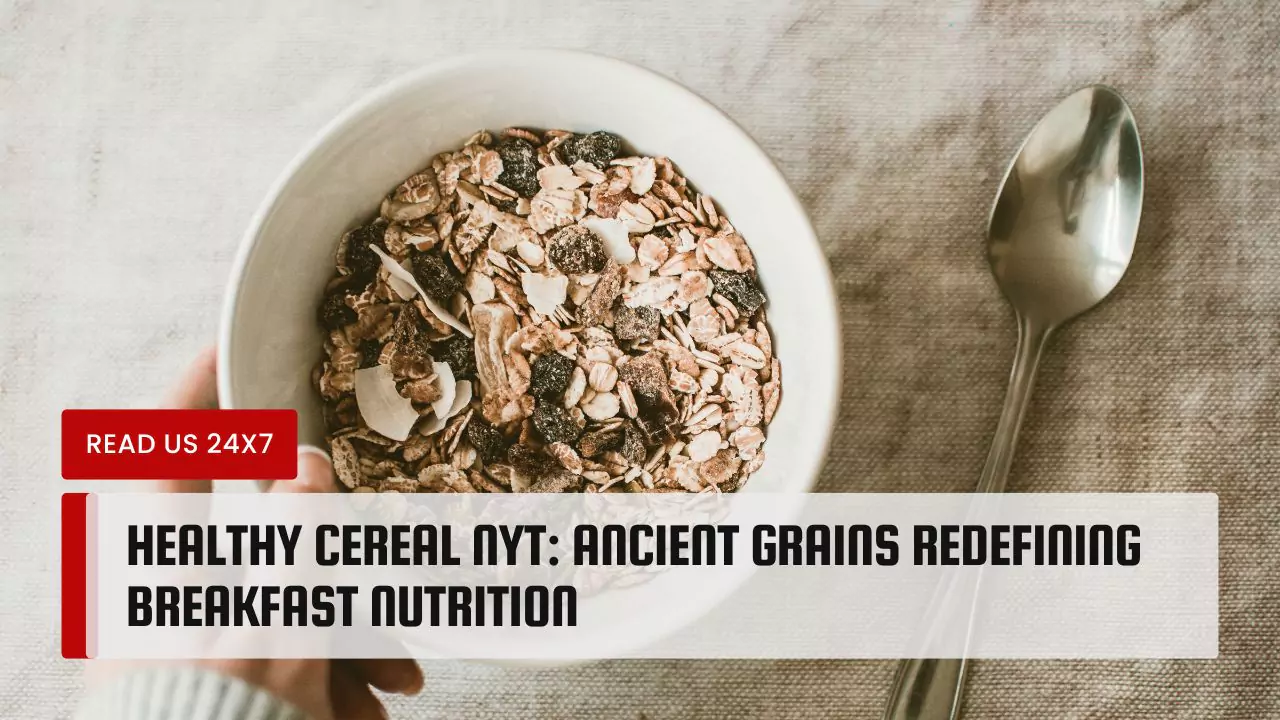Ancient grains are changing how we think about healthy cereal. They provide nutrition, flavor, and texture that improve breakfast choices. Instead of sugary flakes, these grains offer better energy and health benefits. Let’s explore the benefits of ancient grains and how they enhance our breakfast.
What Are Ancient Grains?
Ancient cereals are grains that have undergone minimal changes over the course of time. They are not processed in the same way as contemporary cereals. Quinoa, farro, spelt, and barley are among the most well-known ancient grains. For millennia, these grains have been consumed. They are rich in nutrients and possess distinctive flavors. This renders them ideal for breakfast cereals.
Why Choose Ancient Grains?
Choosing ancient grains is a smart option. These grains have more protein, fiber, and vitamins compared to regular cereals. Foods made from ancient grains may help keep you full longer. This is good because it can stop you from snacking too much during the day.
Higher Protein Content
A significant number of ancient cereals contain a higher protein content than their contemporary counterparts. Protein is indispensable for the purposes of growth and repair in our bodies. It contributes to the maintenance of muscle strength and the provision of sustained energy throughout the day. Quinoa, for example, contains an exhaustive protein profile. This implies that it contains all nine essential amino acids.
More Fiber
Fiber is a critical component of a nutritious diet. It promotes digestive health and aids in digestion. Barley and farro, which are ancient cereals, are excellent sources of fiber. Consuming foods that are high in fiber can assist in the reduction of cholesterol and the regulation of weight. This is crucial for both infants and adults. Consuming cereals that are high in fiber can result in improved overall health.
Rich in Vitamins and Minerals
Ancient grains have many essential vitamins and minerals. These nutrients support many body functions. For example, iron helps transport oxygen in the blood. Magnesium supports muscle and nerve function. B vitamins help turn food into energy. Modern cereals often lack these important nutrients due to processing.
Popular Ancient Grains for Breakfast
Many ancient grains can be used in breakfast recipes. Here are some popular options:
Quinoa
Quinoa is frequently commended for its nutritional value. It is high in protein and gluten-free. This renders it an ideal option for individuals with gluten sensitivities. Quinoa complements fruits and legumes with its mildly nutty flavor. It can be incorporated into smoothies to provide additional nutrition or used to prepare heated cereals.
Farro
Farro is an ancient grain with a chewy texture and rich flavor. It can be cooked and mixed with yogurt or milk. Adding fresh fruit or honey can create a delicious meal. Farro is high in fiber and contains many minerals, including iron and magnesium.
Spelt
Spelt is another ancient grain worth trying. It has a mild sweetness and is packed with fiber. Spelt can be used to make granola, pancakes, or hot cereal. Its nutty flavor pairs well with different toppings.
Amaranth
Amaranth is tiny but mighty. This seed is also gluten-free and packs a punch nutritionally. When cooked, it has a creamy texture, making it perfect for warm cereals. Amaranth is high in protein, fiber, and essential vitamins.
How to Use Ancient Grains in Breakfast?
Incorporating ancient grains into breakfast is easy. You can swap traditional cereals for ancient grain options. Here are a few ideas:
- Swap Oats for Quinoa: Instead of oatmeal, try quinoa flakes. They can be cooked similarly and topped with fruits and honey.
- Mix with Yogurt: Use cooked farro or barley in your yogurt. Add some berries and nuts for a nutrient-packed bowl.
- Make Overnight Grains: Soak ancient grains like farro or barley in almond milk overnight. In the morning, mix in some chia seeds and top with fresh fruit.
- Create Energy Bars: Combine cooked amaranth, nut butter, and dried fruits. Press the mixture into a dish and chill to create healthy bars for on-the-go breakfasts.
- Use in Smoothies: Adding cooked quinoa or spelt to smoothies can boost the nutritional value. Blend with your favorite fruits and greens for a quick breakfast.



